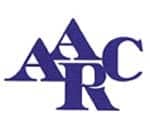A new report in the July issue of CHEST reviews the development and final recommendations of the International Staging Committee of the International Association for the Study of Lung Cancer (IASLC) for the staging of non-small cell lung cancer (NSCLC).
This marks the first time in more than 10 years that the universally accepted lung cancer staging system has been revised to more accurately reflect the prognosis for patients with NSCLC. The revised staging system provides a detailed common nomenclature and more clearly defines the prognosis for patients with NSCLC through the addition of many new patient subgroups and reclassification of some previous subgroups.
The new staging system is based on the largest database of any cancer type and an extensive statistical analysis that included rigorous internal and external validation.
"The development of the NSCLC database represents a tremendous amount of work. The size of the database and the extent of statistical analysis has not been duplicated for any other cancer type," said author Frank Detterbeck, MD, FCCP, chief of thoracic surgery at Yale University, in an announcement. "The new staging classification system also underscores the level of detail and complexity that characterizes the management of patients with lung cancer in the current era. The explosion of knowledge and the complexity of the disease make it harder to practice anything less than a sophisticated approach to lung cancer management."
The new staging system is based on the original TNM staging system, which was adopted in 1973 by the American Joint Committee on Cancer (AJCC) and in 1974 by the Union Internationale Contre le Cancer (UICC). The original TNM system relied heavily on intuition, making recommendations based on a database of 2,155 patients from one US medical institution. The last revision to the system in 1997 used an expanded database, but with only 5,319 patients.
The new IASLC staging system includes a database of more than 100,000 patients from 45 sources and 20 countries and allows researchers to discern an increasing number of details and differences in patients’ conditions. The increased level of detail combined with extensive analysis and internal and external validation have led to a more complex system, but one that more accurately describes the extent of the cancer, the location and spread of the tumor, and the prognosis for patient subgroups.
"The original system and database laid the strong foundation for lung cancer staging as we know it today; however, the staging system had limitations. Due to the small and very narrow database, the staging system was guided by intuition rather than evidence," said Detterbeck. "The revised IASLC staging system marks a shift to a more scientifically based, data-driven approach to lung cancer staging."
The extensive data resulted in the addition of subgroups and the reclassification of select patient subgroups based on patient prognosis or overall survival rate. The staging committee required a high degree of consistency and robustness to underlay all staging definitions, only adopting those shown to be statistically distinct. Each analysis within the TNM staging descriptors underwent an extensive internal and external validation process.
Although the staging classification system provides a common language to define the extent of cancer within a subgroup and the corresponding prognosis, the system does not define the process of determining a patient’s stage, ie, which diagnostic tests should be used, nor does it provide recommendations on treatment.
"The selection of treatment is dependent on many factors beyond the stage grouping. Therefore, one cannot assume that treatment of a subgroup of patients should change because the new classification has placed them into a different grouping," said Detterbeck. "The stage classification system is designed to be a nomenclature tool and a tool to define prognosis, and it is an inappropriate oversimplification to use it as an algorithm to select treatment."
The new IASLC staging system was accepted by the AJCC and UICC and will appear in the UICC staging manual in November 2009.
Source: EurekAlert









